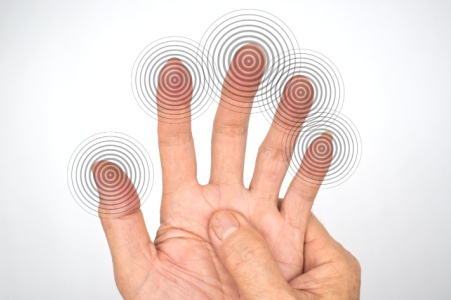Blog

Persistent stress and low energy can significantly impact daily life and may be linked to underlying health conditions. Common causes include anaemia, where low iron levels reduce oxygen supply to the body, leading to fatigue. Mental health challenges such as anxiety or depression can drain emotional and physical energy. Thyroid disorders, especially hypothyroidism, may also cause tiredness, mood changes, and poor concentration. A chiropractor can help by improving nervous system function, reducing physical tension, and supporting overall well-being through spinal adjustments and lifestyle guidance. If you are struggling with constant fatigue or stress, it is suggested that you schedule an appointment with a chiropractor to explore natural and supportive ways to restore your energy and improve your overall health.
Experiencing ongoing stress and low energy can wear down both body and mind, making even routine tasks feel overwhelming. The body’s stress response, designed for short bursts of activity, can exhaust physical and mental reserves when constantly activated, leaving a feeling of fatigue and burnout.
Chiropractic care offers a supportive way to manage these challenges by focusing on the body's alignment and nervous system function. Misalignment in the spine can increase tension, disrupting nerve signals and possibly contributing to feelings of low energy. Gentle adjustments can help relieve this tension, supporting better nervous system communication, which may encourage relaxation and boost energy levels.
Incorporating chiropractic care into a wellness routine can offer a holistic approach to managing stress and low energy, emphasizing balance, relaxation, and overall vitality for a more energized and resilient life.
1. How does stress affect the spine, and how can chiropractic care help?
Stress often leads to muscle tension and poor posture, which strain the spine. Chiropractic adjustments relieve this tension and promote better alignment.
2. How does chiropractic care improve sleep for better energy levels?
Adjustments relieve pain and tension, making it easier to fall asleep and stay asleep. Better rest directly boosts energy and resilience to stress.
If you have any questions please feel free to contact our office located in Red Wing, MN .

Dystonia is a neurological condition characterized by involuntary, often painful muscle contractions that cause repetitive movements or abnormal postures. These muscle spasms can affect any part of the body and may be triggered by genetic factors, brain injury, or other neurological disorders. The unpredictable nature of these movements can significantly impact daily life and overall comfort. Chiropractic care may help manage symptoms by improving spinal alignment and reducing nerve interference, which can support better communication between the brain and muscles. Gentle adjustments and muscle therapies may also ease tension and promote relaxation. If you are struggling with dystonia symptoms, it is suggested that you consult a chiropractor to explore natural options for relief and improved quality of life.
Muscle Spasms
Muscle spasms, or involuntary muscle contractions, can cause sudden pain and tightness, often disrupting daily activities and causing significant discomfort. Spasms are typically triggered by muscle strain, dehydration, poor circulation, or nerve irritation and can occur in any muscle, although they are most common in the neck, back, and legs.
Chiropractic care for muscle spasms aims to relieve muscle tension, improve circulation, and restore the body’s natural balance. By performing gentle adjustments to the spine or other affected areas, chiropractors work to realign the body and reduce nerve interference that may be contributing to the spasms. This approach can help relieve the pressure on muscles, encouraging them to relax and reducing the frequency and intensity of future spasms.
In addition to adjustments, chiropractic care may include stretching exercises, massage, and lifestyle recommendations to prevent recurrence. These exercises are designed to strengthen and support the muscles, improving flexibility and reducing muscle strain.
Chiropractic care offers a holistic, drug-free approach to managing muscle spasms, emphasizing long-term relief and muscle health. By addressing both the immediate symptoms and underlying causes, chiropractic treatment helps people find lasting relief, promoting muscle relaxation and supporting overall well-being.
Will the treatment cause additional pain or discomfort?
Patients sometimes worry that chiropractic adjustments or muscle manipulation will aggravate their spasms. Chiropractors emphasize that treatments are generally gentle and designed to alleviate discomfort without causing additional pain.
Will I feel immediate relief after each adjustment, or does it build over time?
While some patients feel immediate relief after a session, long-term improvement usually develops gradually with consistent treatment. Muscle tension and spasms often respond best to cumulative care over several sessions.
If you have any questions please feel free to contact our office located in Red Wing, MN .

Numbness and tingling are unusual sensations that often feel like pins and needles and may affect any part of the body. Depending on where it is felt, these symptoms can be caused by prolonged sitting or standing, nerve injuries, vitamin B deficiencies, radiation therapy, or even insect or animal bites. They may signal poor circulation or underlying nerve dysfunction. A chiropractor can evaluate the cause through a detailed physical examination and offer targeted care to relieve pressure on nerves, improve alignment, and restore function. If you are experiencing unexplained tingling or numbness, do not ignore it. It is suggested that you seek professional help from a chiropractor to find relief, support your nervous system, and improve your overall well-being.
Numbness and Tingling
Numbness and tingling sensations can disrupt daily life, often arising from issues like nerve compression, poor circulation, or structural imbalances. These symptoms, commonly felt in the hands, feet, arms, or legs, range from mild pins and needles to persistent discomfort. Conditions such as herniated discs, carpal tunnel syndrome, or peripheral neuropathy are frequent causes, often linked to irritated or restricted nerve pathways. Left untreated, these sensations may worsen, leading to reduced mobility or further nerve damage.
Chiropractic care addresses numbness and tingling by focusing on the root causes. A chiropractor evaluates spinal alignment, nerve function, and contributing factors like posture or muscle tension. Through targeted adjustments and therapies, they relieve nerve compression, improve circulation, and restore function. Lifestyle recommendations complement treatment, offering long-term relief and promoting nerve health.
1. Are numbness and tingling always nerve-related?
Not always. While often linked to nerve compression, these sensations can also result from poor circulation or systemic conditions. Chiropractors assess for nerve involvement and recommend appropriate care or referrals.
2. Can numbness and tingling affect only one side of the body?
Yes, these symptoms can be unilateral, often indicating localized nerve compression or structural imbalances, which chiropractors can identify and treat.
For additional information, please contact our office located in Red Wing, MN .

If your wrist feels numb, weak, or tingling, it could be due to carpal tunnel syndrome. This happens when a nerve in the wrist becomes compressed, often from repetitive motion or strain. Gentle adjustments can help relieve pressure and improve movement.
Restore comfort and hand function. Schedule your appointment today.
